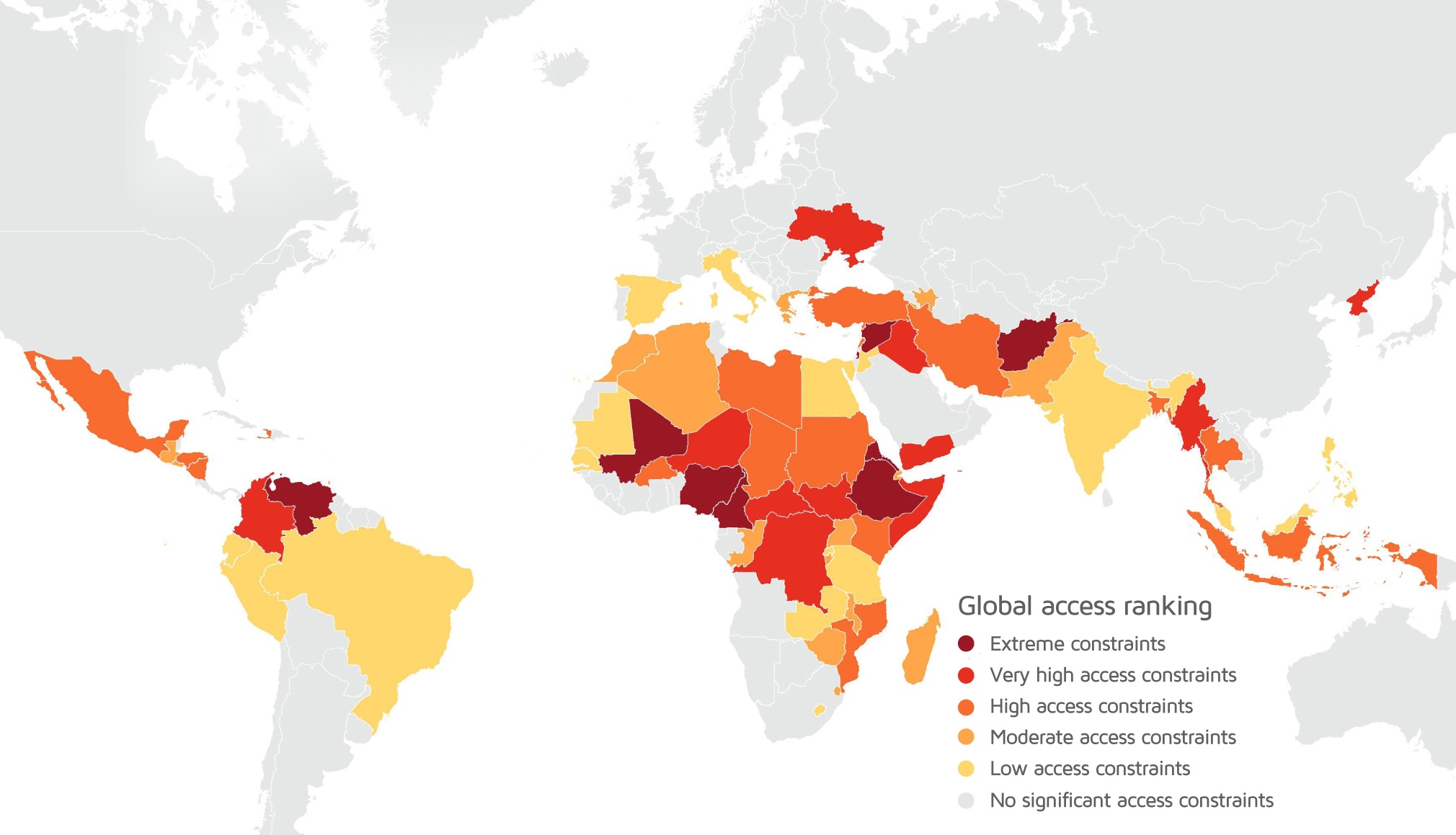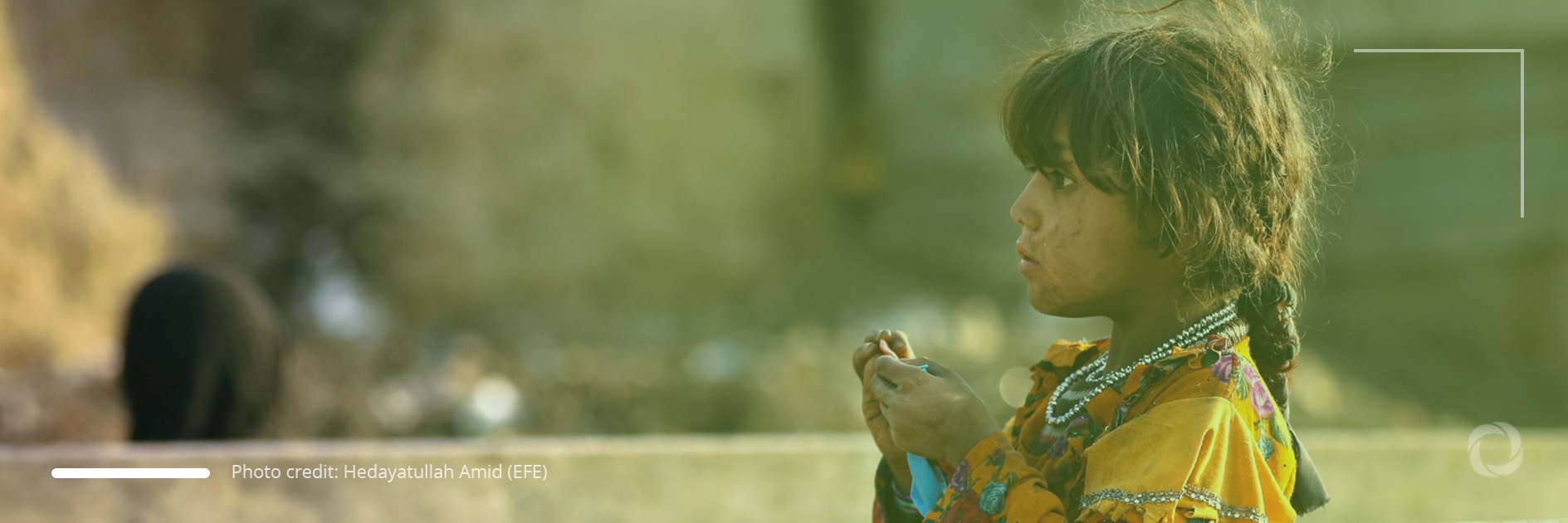About 70 countries are affected by significant constraints that hamper the receipt of the humanitarian aid they need. The main obstacles are restrictions and obstructions placed by local governments and environmental challenges.
According to the latest report by the Assessment Capacities Project, ACAPS, an independent non-governmental project that conducts humanitarian analysis, people in many countries do not receive sufficient humanitarian assistance due to constraints on the ground.
The authors of the publication divided various states into six different categories, from 0 to 6, to measure the range of disruptions. 0 indicates that there are no significant access constraints, 1 refers to a low level of access constraints and 2 to moderate access constraints whereas those in categories 3, 4, and 5 face an alarming level of constraints. Countries in the third category face a high level of access constraints, those in the fourth face very high access constraints, and those in the fifth face an extreme level of access constraints.
The researchers put nine countries into category 5, 11 into category 4, and 16 into category 3. They also found that in 11 states access to humanitarian aid had deteriorated compared to the previous year while for 17 countries the situation had improved.
Researchers took into account three main categories in terms of constraints that put humanitarian assistance access at risk, the access to humanitarian aid for those people in need, the access to affected settlements for humanitarian actors, and security and physical constraints.
The image below shows the global scale and range of access constraints.

🔸 Extreme constraints
Extreme constraints occurred in Afghanistan, Cameroon, Eritrea, Ethiopia, Mali, Nigeria, Palestine, Syria, and Venezuela. The authors of the report indicated that the most serious constraints to humanitarian access occurring in those countries were the government restrictions imposed on humanitarian workers and the temporary suspension of humanitarian funds by third states. Furthermore, some governments fail to acknowledge the fact that their country is affected by humanitarian crisis and therefore ban humanitarian actors from entering the country thus creating bureaucratic obstacles. Humanitarian organizations also experienced the confiscation of humanitarian assistance by officials. Other obstacles were caused by military conflicts, the activity of armed groups, and movement restrictions introduced by local authorities.
🔸 Very high constraints
Such constraints have been observed in the Central African Republic, Colombia, Democratic People’s Republic of Korea, Democratic Republic of Congo, Iraq, Myanmar, Niger, Somalia, South Sudan, Ukraine, and Yemen. In these countries, humanitarian assistance could not be delivered at an appropriate level due to conflicts, political unrest, or the restrictions introduced by the authorities that hindered access to conflict-affected areas or areas controlled by the government. Other obstacles included the activity of armed groups and drug trafficking cartels, the strict anti-COVID-19 measures introduced in some states, ethnic tension, and violence.
🔸 High constraints
The countries facing high constraints are Bangladesh, Burkina Faso, Chad, Haiti, Honduras, Indonesia, Iran, Kenya, Lebanon, Libya, Mexico, Mozambique, Nicaragua, Sudan, Thailand, and Turkey. Some of those states have been hit by natural disasters such as earthquakes which temporarily hampered access to humanitarian aid by people in need. Other constraints apparent in this category are political turmoil, violence perpetrated by gangs which hinders humanitarian access in zones they have under control, cases of kidnapping of humanitarian workers, natural disasters such as floods or landslides, criminal activity, the activities of armed groups, and drug cartels, restrictions introduced by security forces towards humanitarian organizations, administrative requirements, protests and riots, violence and sanctions against humanitarian actors.

